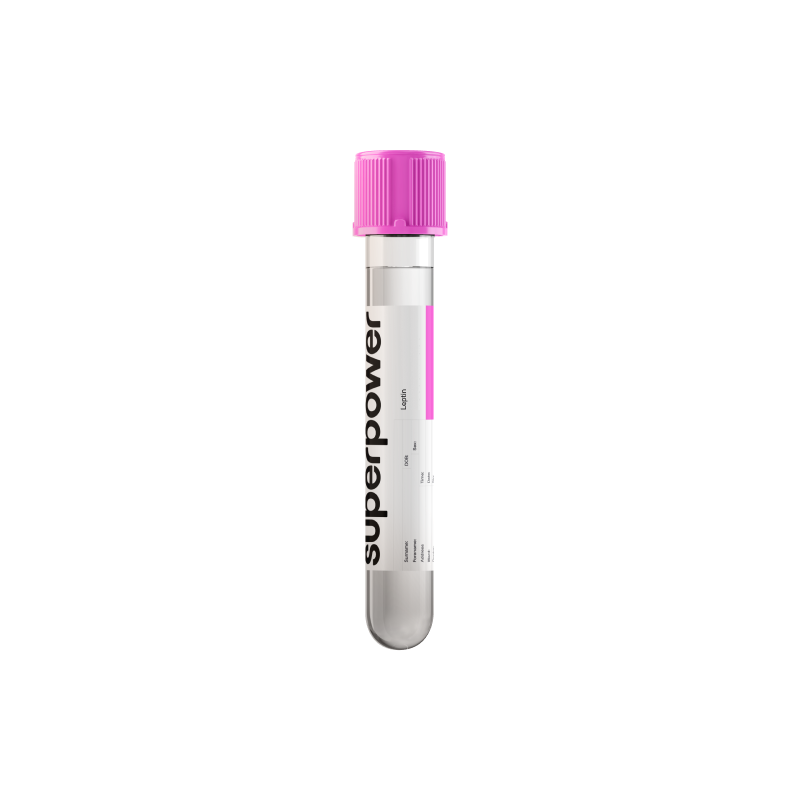Key Benefits
- Check your vitamin B6 status to prevent deficiency or excess harm.
- Spot early deficiency that can cause neuropathy, fatigue, anemia, and skin changes.
- Flag excessive levels from supplements that raise risk of sensory nerve damage.
- Clarify elevated homocysteine when reviewed alongside B12 and folate results.
- Guide targeted supplementation and diet changes to correct levels safely.
- Support pregnancy care, including safe nausea treatment and fetal brain development.
- Track effects of medications that deplete B6, like isoniazid or hydralazine.
- Monitor your recovery and ensure levels stay steady over time.
What is Vitamin B6 (Plasma)?
Vitamin B6 (plasma) is the amount of vitamin B6 circulating in your blood. Vitamin B6 is a family of related compounds from food that your body converts into its active form. After absorption in the small intestine, the liver turns vitamin B6 into the main working coenzyme, which travels in blood mostly attached to protein. The plasma test typically reflects this active form (pyridoxal 5′-phosphate, PLP), along with smaller amounts of other vitamers (pyridoxal, PL; pyridoxamine, PM; and the breakdown product pyridoxic acid, PA).
Vitamin B6’s core job is to help enzymes do chemistry, especially those that handle amino acids and proteins. Its active form (PLP) powers key steps in building neurotransmitters (serotonin, dopamine, GABA), supporting red blood cells and heme, breaking down glycogen for energy, converting tryptophan to niacin, and processing sulfur amino acids related to homocysteine. It also supports immune cell function and aspects of lipid and gene regulation. A plasma measurement gives a snapshot of how much active B6 is available to these enzyme systems throughout the body, capturing the nutrient’s capacity to support nerve function, oxygen transport, and day‑to‑day metabolic flexibility.
Why is Vitamin B6 (Plasma) important?
Plasma vitamin B6—usually measured as PLP, the active coenzyme—powers enzymes that process amino acids, build neurotransmitters, make heme for red cells, and release glucose from glycogen. It also teams with folate and B12 to regulate homocysteine.
Labs define a reference interval with a lower cutoff for deficiency. Most people do well in the middle; very low signals insufficiency, and very high is uncommon without supplements.
Low PLP often reflects poor intake/absorption, alcohol, certain drugs, or inflammation that depresses circulating PLP. Pregnancy and adolescence raise demand and can lower values. System effects include reduced GABA/serotonin (irritability, low mood, infant seizures), impaired heme synthesis (anemia, fatigue), peripheral neuropathy, glossitis and angular cheilitis, seborrheic dermatitis, and higher homocysteine with possible vascular risk.
Markedly high results usually reflect supplementation. The key toxicity is sensory neuropathy—numbness, burning, gait imbalance—mimicking deficiency. Unexpectedly high values without supplements merit context, since acute illness and kidney or liver dysfunction can alter circulating PLP.
Big picture: B6 links neurotransmission, blood formation, glucose handling, and one‑carbon metabolism. It interlocks with folate, B12, protein intake, and inflammation. Staying in a physiologic band supports cognition, mood, hematologic health, and long‑term cardiometabolic resilience.
What Insights Will I Get?
Vitamin B6 (plasma) primarily reflects pyridoxal‑5‑phosphate (PLP), the active coenzyme form. PLP drives over 100 enzymes that process amino acids, build neurotransmitters, support hemoglobin synthesis and oxygen delivery, regulate glycogen breakdown and gluconeogenesis, and help control homocysteine with folate and B12. Because of this, it links to energy use, cardiovascular risk, cognition and mood, immune readiness, and hormone signaling.
Low values usually reflect limited tissue supply from low intake or absorption, higher demand (notably in pregnancy), chronic inflammation, liver disease, alcohol use, or certain medicines. Functionally this restricts neurotransmitter production (serotonin, dopamine, GABA), slows heme synthesis causing anemia (sideroblastic), and impairs the homocysteine‑to‑cysteine pathway, so homocysteine can rise. Fatigue, irritability, and neuropathic symptoms may occur; infants, older adults, and pregnant individuals are more susceptible.
Being in range suggests PLP‑dependent enzymes are adequately supplied: steady amino acid and glucose metabolism, normal homocysteine handling, healthy red blood cell and immune function, and balanced neurotransmitter synthesis. Many consider mid‑range values consistent with adequacy; there is no established benefit to the very high end.
High values usually reflect recent supplementation or frequent intake of fortified products. Less commonly, altered metabolism or clearance in serious illness can raise circulating vitamers. Sustained very high exposure can injure sensory nerves (sensory axonal neuropathy), though blood levels do not always predict symptoms.
Notes: Most labs measure PLP; the analyte is light‑sensitive and preanalytical delays can lower results. Inflammation depresses circulating PLP independent of intake. Estrogens and drugs such as isoniazid, hydralazine, and penicillamine reduce PLP. Pregnancy lowers plasma PLP via hemodilution and fetal transfer. Reference intervals vary by lab; homocysteine provides functional context.

.png)

.svg)



.png)
.png)
.png)









